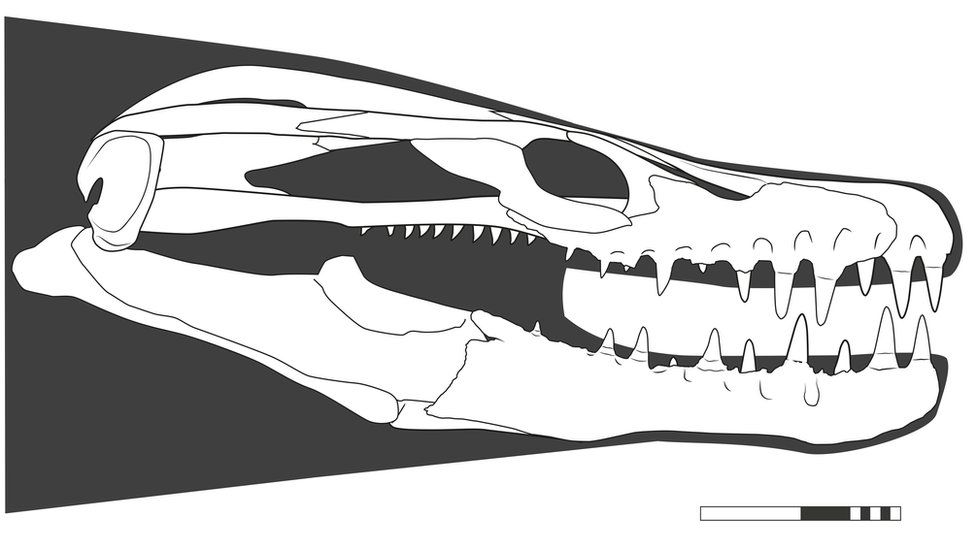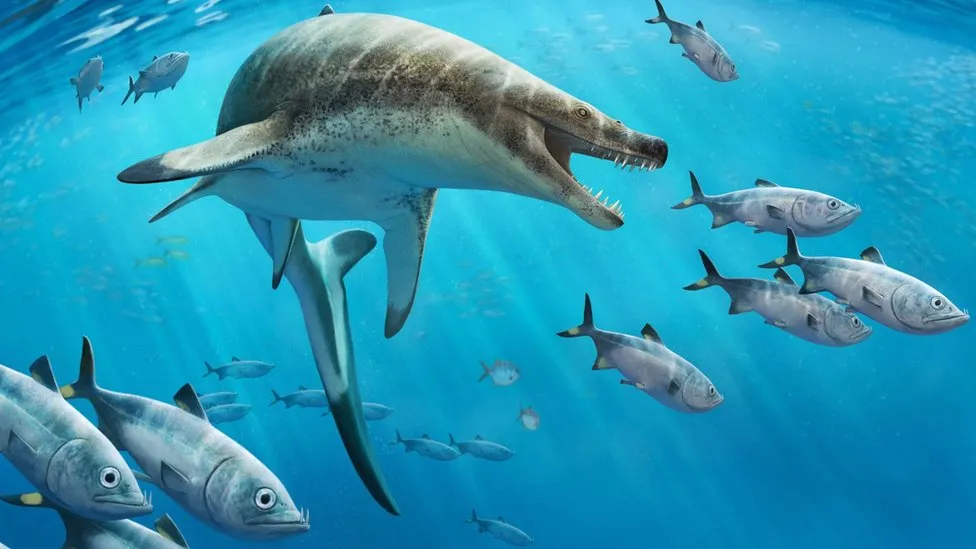Scientists say they have discovered fossils belonging to a “nightmarish” sea lizard species that hunted the oceans 66 million years ago.
The creature, Khinjaria acuta, was about 26ft (8m) long – the same as an orca – and had “dagger-like” teeth.
Researchers said the species would have lived alongside dinosaurs such as Tyrannosaurus rex and Triceratops.
The study is based on analysis of a skull and other skeletal remains found at a mine in Morocco.
Dr Nick Longrich from the University of Bath, who led the study, wrote that the “freakish” species had “a demon’s face and teeth like knives.”
Its teeth and strong jaw gave the creature a “nightmarish appearance” and “a terrible biting force”, researchers said.
It also led the team onto finding the perfect name for the species.
“The word khinjar being an Arabic word for “dagger”, and acuta being Latin for “sharp”, so literally, “sharp dagger” or “sharp knife””, Dr Longrich added.

Khinjaria acuta is a member of a family of giant marine lizards known as mosasaurs, distant relatives of today’s Komodo dragons and anacondas.
Researchers believe the lizard was just one out of a range of top predators that inhabited the Atlantic Ocean off the coast of Morocco.
“This is one of the most diverse marine faunas seen anywhere, at any time in history, and it existed just before the marine reptiles and the dinosaurs went extinct,” Dr Longrich said.
Both the mosasaurs and dinosaurs became extinct towards the end of the Late Cretaceous period, around 66 million years ago.
Their extinction opened the seas up for whales, seals and fish like swordfish and tuna. But it also meant that, in modern marine food chains, there are fewer apex predators.
“There seems to have been a huge change in the ecosystem structure in the past 66 million years,” Dr Longrich said.
“This incredible diversity of top predators in the Late Cretaceous is unusual, and we don’t see that in modern marine communities.
“Whether there’s something about marine reptiles that caused the ecosystem to be different, or the prey, or perhaps the environment, we don’t know.
“But this was an incredibly dangerous time to be a fish, a sea turtle, or even a marine reptile.”
